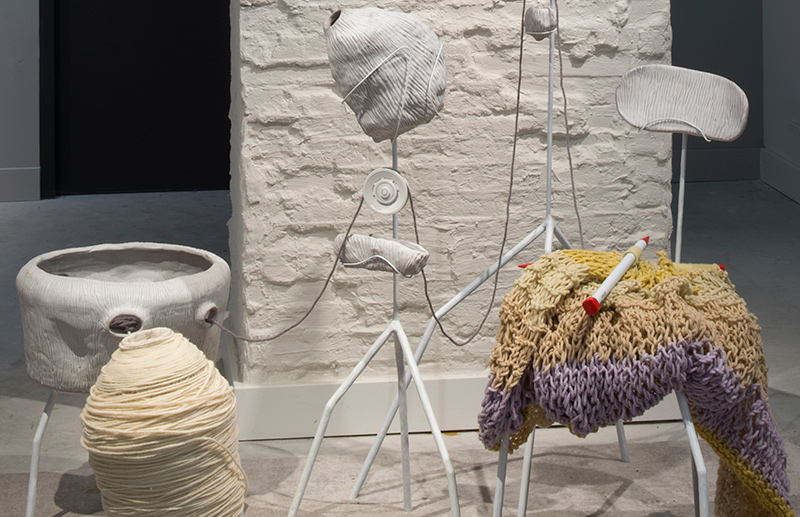What does colour mean? – Giulia Pompilj
How can plants from across our planet be a source for colorful textiles? Every culture and every ecosystem has a unique food print. These are beautifully visible in the colorful, with local commodities produced textiles.
In the process on dyeing textiles with plants, the colors result from chemical reactions in the soil. Designer Giulia Pompilj researched the differences between dyed colors in the Peruvian Andes, in the Amazon and here in Eindhoven. Whether it’s Eucalyptus from the mountains, Maytenus laevis from the jungle or Celidonia from the city, the color they produce is an entrance into anthropological narratives. Giulia Pompilj applies her findings in the design of a machine that mimics the affects of an ecosystem. The machine colors the yarn with botanical dyes, which is then processed into a wearable garment. The end product brings people from different regions closer to one another, and closer to nature too.
Italian designer Giulia Pompilj graduated from Design Academy Eindhoven with her ethnobotanical research into color and textiles. She is intrigued by the diversity and interrelatedness of nature and culture. For Pompilj biology and anthropology are not separate disciplines of research; rather they are two sides of an entangled narrative. Through her work, she seeks to blur the boundaries of science and storytelling.

